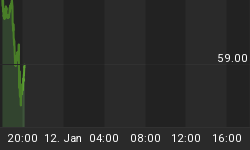China, the most heavily populated nation in the world, is undergoing one of the greatest economic expansions in modern times. The rate of economic growth over recent years has been astounding in itself, but what is truly surprising to some observers is the manner in which China's industrial revolution has evolved.
The country's industrial base has become increasingly sophisticated and varied; from its emergence as a center of basic goods manufacturing, the country is now home to firms in the software and computer industries, as well as a growing automotive industry. Meanwhile, the people of China are looking to "move on up" in the hope that the economic growth their country is enjoying will spread to them. An emerging middle class and the increasing modernization of national infrastructure will mean an increase in travel and spending on consumer goods. These trends toward increased mobility, spending and industrialization have ramped up the country's demand for fuel and electricity, and the pressing need to power the nation's growth will continue into the future.
In facing the problem of how to meet the economy's growing demand for power, the Chinese have opted to rely on coal, a resource that their country is naturally blessed with.
Eighty per cent of China's electricity is powered by coal, according to a recent BBC News report. What's more, there are applications for coal beyond power generation. Taking a cue from South Africa, China hopes to use coal liquefaction to create synthetic oil and diesel fuels for transport. So far, the country's use of coal has been instrumental in plugging the gap in energy supply.
The extraction of the resource, however, has come at a large human cost. Mine accidents and an overall lack of safety plague China's coal mining industry. The most recent string of disasters have occurred one on top of another. While the last of the dead were being recovered from the Dongfeng mine blast, a rescue effort was underway at a separate mine flood in Henan province. On December 7th, another blast in Tangshan City has trapped miners and left 54 dead. It is now widely acknowledged that China's coal mining industry is the most dangerous in the world.
Accident rates in Chinese mines serve as a horrifying reminder of the Western world's own path towards industrial modernization. Between 2001 and 2004, China officially recorded an average 6282 coal mining deaths a year, according to Chinese newspaper The Standard. The same source noted that the US, while producing about half the amount of coal, experienced 28 deaths last year. Certainly, the high death counts and spotty record keeping are more in line with the early phase of industrialization.
In fact, the current situation in China might be compared to the earlier periods of mining in a country like the US, when mine safety laws were just beginning to take hold. Records of coal mine fatalities going back to 1900 show that American mining in the earlier part of the 20th century was far more perilous than it is today. Figures from the most recent years (1990-2004) are taken from a sample of miners that show a workforce about 1/5 the size of earlier days, but the number of fatalities have decreased at a significant rate. In the first years of the 20th Century, a workforce of around 500,000 experienced 1500 or more coal mining fatalities a year. By the late 1940s, fatalities among a similarly sized group were reduced by a third. Scanning the table, we see the number of US coal miners shrinking as we approach the present, with the rate of fatalities dropping a bit faster. Increases in mine safety regulation, worker awareness, and improved technologies are credited with the improving safety of mines in developed countries such as the US, UK and Australia.
So how long will it take for China's mines to reach the safety standards of the more developed nations? There is hope among experts that advances can be made through the sharing of knowledge and technology, thereby increasing the rate at which China's mines might reach our current standards. The application of Western safety standards and reporting methods could help China avoid some of disasters faced by miners in bygone days. As mining consultant Dave Feickert has noted, appraising mine safety and setting up some sort of safety system, while a difficult task, is a much-needed development. In the sphere of the private sector, joint ventures with leading companies might result in a spread of best practices in exchange for exposure to China's resources.
In the meantime, China's push for coal will continue. This is virtually certain in the face of the country's accelerating energy needs and the limited availability of substitute energy. Certain other factors, such as development targets and conflicts of interest in safety monitoring at the local level may lie behind the reckless pace in mining, according to a recent editorial in China Daily. These points have also been mentioned in earlier BBC News stories. Economic miscalculations may also have lead to "hidden danger in production safety". According to Zhu Zhigang, past mispricing of China's mineral resources have caused many mining firms to ignore the costs of safety and environmental restoration.
The country's leaders must address these problems and continue support for the sharing of mine safety knowledge. Sensible solutions must be agreed upon to remove conflicts of interest in mine safety monitoring. The closure of illegal and unsafe mines should become a national priority, one that is systematically and thoroughly implemented. Hopefully, the attention directed to the most recent and ongoing mining tragedies will help to assure it.















